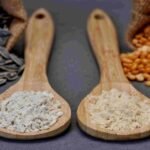The emphasis on quality assurance is expected to increase further as a result of growing awareness about food safety. To boost exports of livestock products, it is essential to enforce compliance with various SPS measures vigorously, ensuring adherence to international hygiene standards and tapping into the untapped potential of exporting these products to developed countries, as explained by Neha Thakur and Seema Yadav.
Table of Contents
Exports of livestock products have registered a commendable rise, and the liberalization policies seem to have further augmented their growth. The exports of buffalo meat, dairy products, and eggs have shown promising signs. On the other hand, imports of most of the livestock products have been insignificant. India, which was a net importer of livestock products till 1985, has become a net exporter post-1985, indicating the export potential of the Indian livestock sector (1). India lacks access to developed country markets due to its stringent food safety and quality standards.
To give a boost to exports of livestock products, compliance with various SPS measures should be taken up vigorously to ensure international hygiene standards and to harness the untapped potential of exporting to developed countries like USA, EU, and Japan (2). Further, with the rise in world prices consequent to the reduction in support, it can enhance its access to markets in countries with less stringent food safety and quality standards. Compliance with food safety measures (FSM) has become an important issue in the trading of livestock products (3).
Quality Control of Livestock Products
Quality control is the evaluation of a final product before its marketing, i.e., it is based on quality checks at the end of a production chain, aiming at assigning the final product to quality categories such as “high quality”, “regular quality”, “low quality”, and “non-marketable”. Since, at the end of the production chain, there is no way to correct production failures or upgrade the quality of the final product, the low-quality products can only be sold at lower prices, and the non-marketable products have to be discarded. Their production costs, however, had been as high as those of the high-quality and regular products. Thus, quality control has only a limited potential to increase the quality and efficiency of a multi-step production procedure.
Quality Assurance, in contrast to quality control, is the implementation of quality checks and procedures to immediately correct any failure and mistake that can reduce the quality of the interim products at every production step (4). Thus, the desired high quality of the final product is planned and obtained by conducting:
Standard Operating Procedures (SOP’s) that guarantee the desired quality of the interim products at every production step. If an entire production chain follows a written description (handbook) of all SOPs along the entire production chain, the demands for Good Manufacturing Practice (GMP) are met. The management approach to long-term success through customer satisfaction, based on the participation of all members of an organization (suppliers included) in improving processes, products, services, and the working culture, is called Total Quality Management (TQM).
The examples for quality control versus quality assurance in the area of food safety include the testing of carcasses for residues is quality control, the implementation of residue avoiding production procedures at farm level is quality assurance. Furthermore, the testing of meat products for salmonella prior to their marketing and consumption is quality control, the implementation of on- and off-farm salmonella-reducing measures as standard operating procedures are quality assurance.
Need to Implement Quality Assurance in Livestock Products
Mandatory inspection of livestock products and the application of stringent hygiene mandates form the core of livestock products trade, especially meat. For example, the quality assurance in livestock products begins from slaughter, followed by meat processing, storage, and distribution through marketing channels. And the reasons for such strict quality assurance policy are:
There is more risk to human health than ever from meat products. Although the safety of meat products has increased but so have the number of diseases that have found their way into the food chain. And the rise of antibiotic-resistant (ABRs) strains of microbes commonly called superbugs presents a difficult situation for public health.
Chemical residues in food and hormones also cast an ugly shadow on human health.
Food safety issues can easily become non-tariff trade barriers and are increasingly used as marketing tools, nationally and internationally. Internationally: Trade barriers that prevent national meat industries from getting access to international markets are more and more based on food safety concerns.
The consumers are becoming more and more health-conscious and demand for fresh and organically raised foods have gone up (5). The consumer of today is more alert and wise in terms of decisions made with respect to the food that he is consuming.
The conventional meat inspection is falling short to detect the emerging food-borne zoonoses. The emerging pathogens of today like Salmonell, Toxoplasma, Trichinella, Campylobacter and Yersinia are detectable through pathogen-specific approach as they do not cause clinical symptoms or specific lesions on carcasses (6). The traditional meat inspection is effective against classical zoonoses like tuberculosis and brucellosis as they cause both clinical diseases that could be recognized at the farm level and lesions that could be recognized during meat inspection at slaughter. But for emerging zoonoses, we require internationally accepted standards of inspection.
Quality Control in India (Under National Livestock Policy)
The Food Safety and Standards Authority of India has been set up under the provisions of the Food Safety and Standards Act with the mandate to inter-alia lay down the standards and regulate the foods of livestock origin. The principles of food safety will be emphasized in a primary production system so that food safety concerns and traceability issues are addressed throughout the entire food chain, viz., livestock rearers and primary producers, food processors, as well as marketing networks (7). The entire food sector is required to ensure the quality, safety, and suitability of food for human consumption. Livestock origin food and food products have to be free of contaminants, toxins, pathogens, pesticides and antibiotic residues, harmful additives, and adulterants.
In order to improve and encourage quality, the concept of a premium on quality would be highlighted. Quality processing, attractive packaging, cold chain, and suitable marketing network would be made an integral part of production and processing. States may be encouraged to promote Public Private Partnership initiatives in this regard (8).
A system of traceability of livestock products would be promoted.
The production of organic livestock products will be encouraged through traceability of methods of feeding, treatment, and quality production. Standardization of production processes and certification of organic farming practices would be established.
Awareness generation among farmers and consumers regarding food safety standards would be promoted.
Conclusion
The emphasis on quality assurance is expected to increase further as a result of growing awareness about food safety, emerging diseases and increasing the paying capacity of the consumers in both domestic and international markets. The cost of compliance, the investment required, handling and processing and traceability of the products are some of the important issues that need to be addressed to enhance livestock exports.
However, the domestic market would be the core market for most of the livestock products and in some instances, over-emphasis on trade in livestock products may lead to increased food insecurity for certain groups of people whose livelihoods largely depend on livestock rearing. To reduce the negative externalities of international trade in livestock products, incentives and support services should be structured to allow subsistence farmers and landless livestock farmers to participate in the livestock trade and reap the benefits of emerging opportunities.
References
- Union Budget (2004-05 & 2006-07). Minister of Finance, Government of India, New Delhi
- World Bank (1999). India Livestock Sector Review: Enhancing Growth and Development, Rural Development Sector Unit, South Asia Region, World Bank, Allied Publishers, New Delhi.
- Van Tongeren F., H. Van Meijl and Y. Surry (2001). Global models applied to agricultural and trade policies: A review and Assessment. Agricultural Economics. 26: 149 to 172.
- FAO (Food and Agriculture Organisation of the United Nations), FAO Database, Rome, Italy.
- S. Issanchou-Consumer expectations and perceptions of meat and meat product quality-Meat Science-Volume 43, Supplement 1, 1996, Pages 5-19
- Balassa B. and D.M. Schydlowsky (1972). Domestic resource costs and effective protection once again. Journal of Political Economy-80, 63-69
- Birthal P. S., Anjani Kumar and T. N. Datta (2008). Trading in livestock and livestock products (Rapporteur’s Report).Indian Journal of Agricultural Economics 63(1):58to63
- Sevela M. (2002). Gravity type model of Czech agricultural export. Agricultural Economics, 48 (10): 463to466.
Have a news or topic to share with industry? Write to us editorial@pfionline.com
















